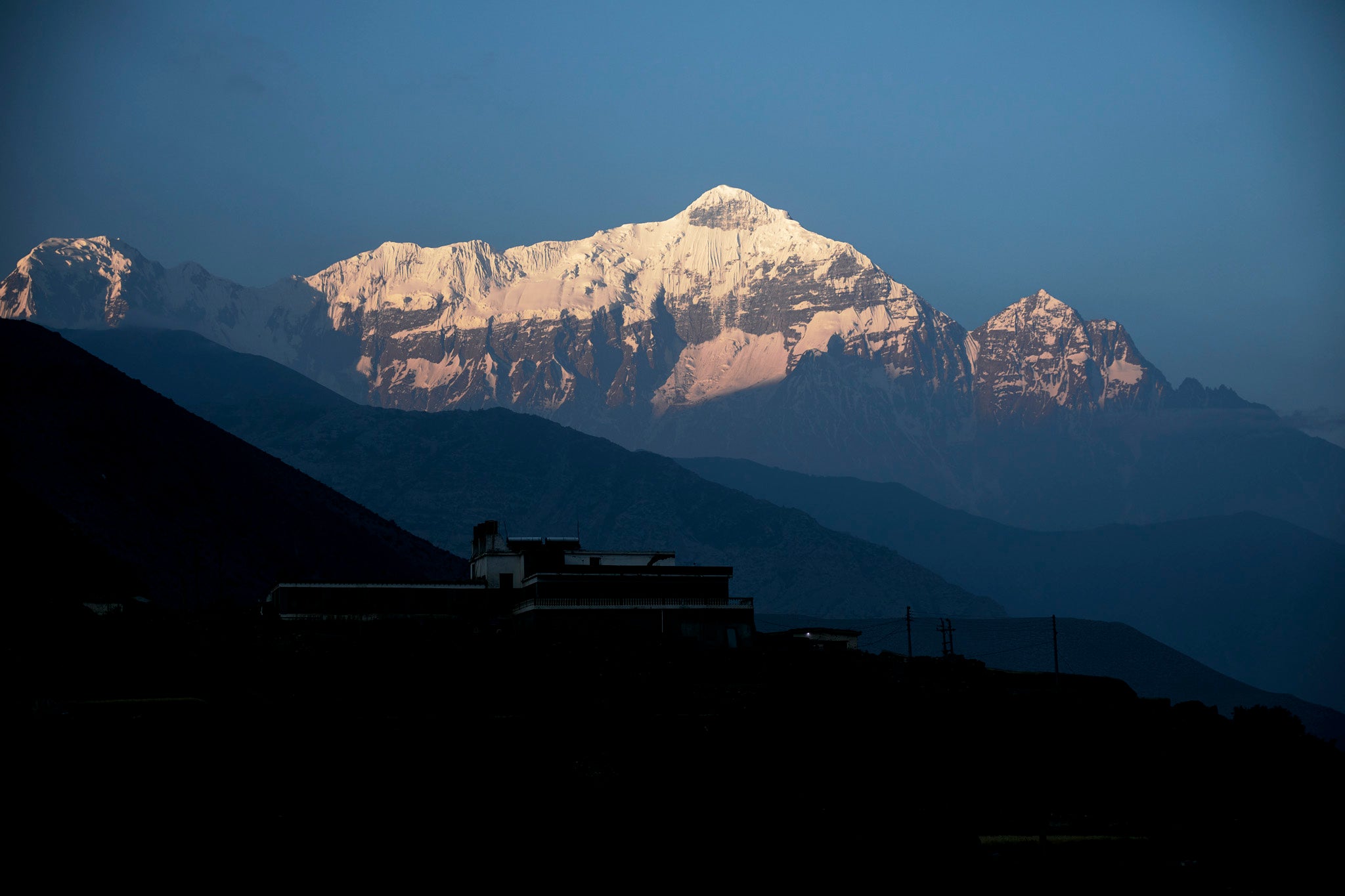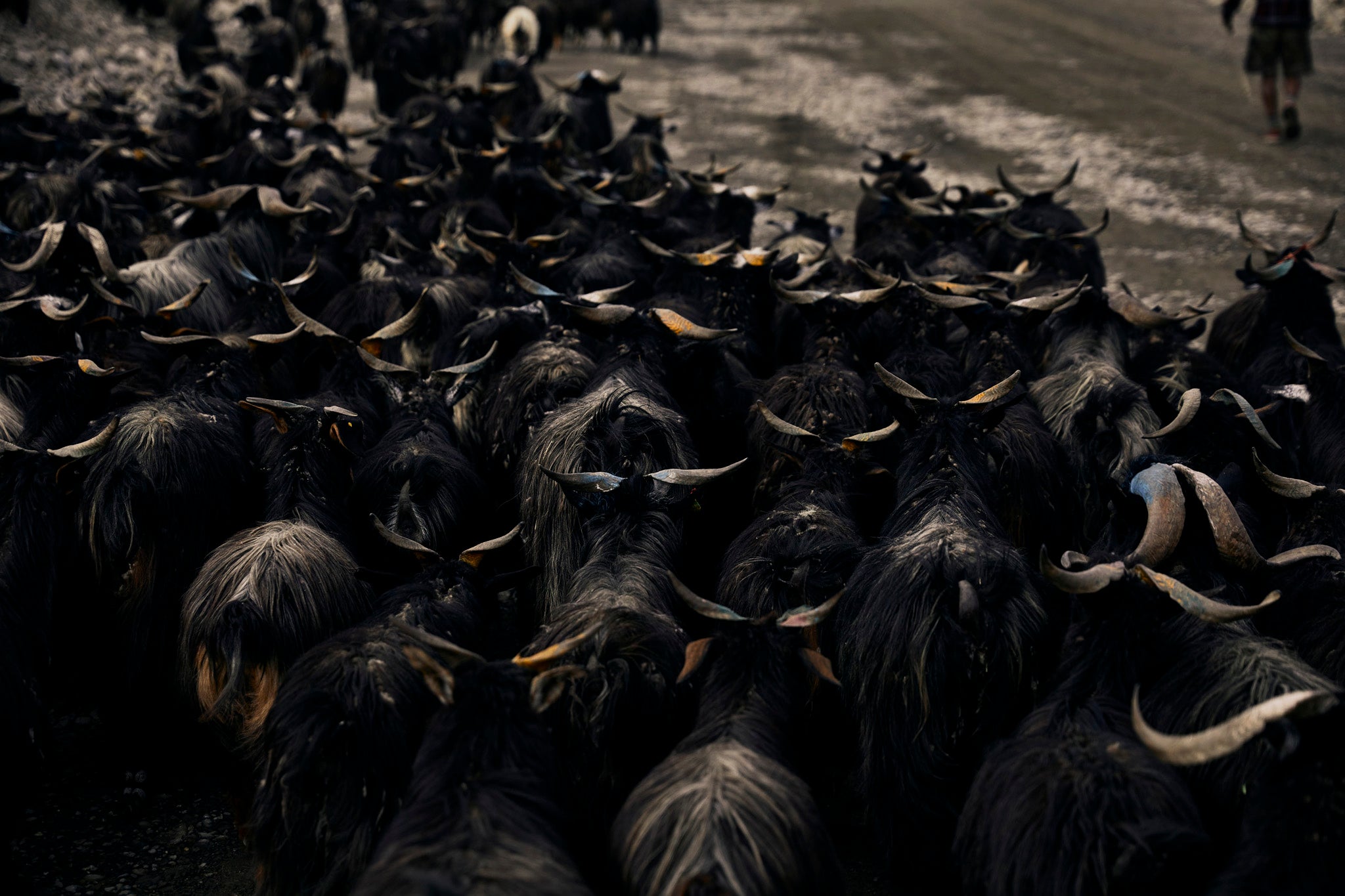Climate change spells cultural extinction for Nepal’s nomadic herders
The nomadic herders of Mustang who’s livestock have grazed the pastures in the Nepalese Himalayas for generations, fear the dramatic change in weather patterns may consign their traditions to the history books forever, Paddy Dowling finds


Your support helps us to tell the story
This election is still a dead heat, according to most polls. In a fight with such wafer-thin margins, we need reporters on the ground talking to the people Trump and Harris are courting. Your support allows us to keep sending journalists to the story.
The Independent is trusted by 27 million Americans from across the entire political spectrum every month. Unlike many other quality news outlets, we choose not to lock you out of our reporting and analysis with paywalls. But quality journalism must still be paid for.
Help us keep bring these critical stories to light. Your support makes all the difference.
The district of Mustang in northern Nepal – which until recently was still ruled by its own monarchy – is regarded as one of the last bastions of undisturbed Tibetan culture.
Kagbeni village, which is located at an altitude of 2,804 metres above sea level, is a religious site for Hindu pilgrims, a hub for discerning trekkers from across the globe and home to the Changra mountain goat, which have grazed on the vast open pastures of wild Jadibuti herbs, for centuries.
For those nomadic communities living at high altitudes in the foothills of the majestic snow-capped Annapurna mountains of the Himalayas, rearing livestock has been a way of life and their primary livelihood for generations.


The very specific flora and fauna found at higher elevations as well as freezing temperatures produce optimal grazing conditions for the Changra and stimulate its soft undercoat to produce the highest quality of cashmere pashmina wool.
However, herders here concede, their ancient way of life is under threat from cheap imitations imported from the far east and stark changes in weather patterns.
As a result, many have turned their backs on nomadic tradition, and either migrated to larger urban sprawls like Nepal’s capital city, Kathmandu, or emigrated overseas to seek employment.
Kagbeni’s population at its peak in the year 2000 stood at 1,256 people. Today only 315 residents remain.
“We have witnessed countless families with deeply rooted ancestry here leave. It’s becoming harder and harder to provide for our families,” explains Aange Gurung, 77, who started life herding livestock with his father aged two years old.


Gurung continues: “The science surrounding what people call ‘climate change’ is not something we know or have read about. Here we observe changes over time. We read the land and the sky.
“We keep the goats at low-land pastures for a shorter time due to the increasingly warmer temperatures and more time at cooler up-land pastures, which is depleting the grazing more quickly.”


Gurung says that they experience more intense rain over short periods, which has washed away homes and agricultural outbuildings, created landslides which has altered grazing access, destroyed staple arable crops – that nomadic people in these regions rely on for food – and claimed the lives of several goats swept away by the floodwaters. One month ago, a flood in the Kagbeni River washed away 29 houses and displaced half of the village’s residents.


Historically, Nepalese pastoralist herders had limited knowledge about the superior quality and value of Changra cashmere. “The goats were primarily bread for their organic meat,” explains Aparna Bhattarai founder of Symrik Cashmere and social enterprise project to save the Changra goat.
Bhattarai has worked with herders and local producers in regions such as Mustang, Dolpa and Humla for more than a decade, reinvesting profit to preserve the local breed of mountain goat and pastureland through conservation.


Symrik have developed and implemented best practice techniques for the delicate combing and spring harvest of wool, as well as efficient methods of cashmere collection and sorting and preserving the art of traditional weaving.
“Despite the success of the project, our herders are now facing the enormous challenges climate change is presenting, and in the most unforgiving of landscapes.


“Several households have now become food-insecure and are selling their entire Changra flocks, out of necessity, to feed their families. Unless something changes, there will be nothing left to preserve,” says Bhattarai.
In the absence of any formal support to those living in the most far-flung regions of Nepal, and by the finest of margins, the responsibility rests with social enterprises such as Symrik to implement disaster risk reduction warning systems to keep their producers, families and herds safe from wildfire, landslide and flood.


In addition, they plan to deploy drone technology, which will provide real time data and mapping of pastureland health at various altitudes. Information that ought to be of significant value to herders, still grappling with the lack of grazing.
Preserving the livelihoods of nomadic, indigenous or tribal people all over the world who now face the threat of extinction due to climate change is paramount. Embracing the past will not only honour cultural heritage, it will also provide insight to ointo future.
If more corporations and brands think past the bottom line and continue to demonstrate, not just a financial, but a moral obligation to their supply chains, then perhaps there will be hope for preserving people in their places, even when facing something as overwhelming and monumental as climate change.
Symrik Cashmere trades here.
Join our commenting forum
Join thought-provoking conversations, follow other Independent readers and see their replies
Comments